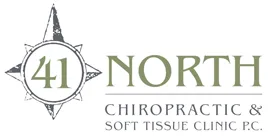Strength
Strength exercises are often a necessary step to fix a problem permanently. Because muscle weakness so often is a catalyst to injury, the weakness must be corrected or the injury will return.
Muscles become weak for many reasons. It’s critical to determine why specific muscles are weak before jumping right into strengthening them. When applied to the treatment process too early, strength exercises can be ineffective, inappropriate, and counterproductive. After other problems have been identified and corrected, specific exercises can be implemented into the treatment plan.
To be effective, strengthening occurs sequentially. First the weakest link in the chain must be isolated and strengthened independently. If this step is missed, surrounding muscles, which have been compensating up until this point will continue to do so. After the weakest link is strong and balanced, functional exercises will be used to improve overall strength.
It is important that each muscle in the body is capable of doing what it is intended to do.
Stretching
Stretching is an activity that can both help and hinder progress. When a muscle is tight, the doctor must determine why it is tight. Muscles can be tight for several reasons:
1. Pain: If something is painful, muscles tighten to take pressure off the painful structure. This is a protective mechanism.
2. Scar tissue: Scar tissue acts like glue in a muscle. The section of the muscle containing scar tissue will not stretch as much as it should, limiting muscle length.
3. Nerve entrapment: If scar tissue forms next to a nerve, the nerve can become ‘glued’ to the surrounding muscles. Nerves don’t stretch; they should floss in and around muscles. When they stick to muscles, the surrounding muscles will contract to protect the nerve from being stretched.
4. Fatigue: When muscles become fatigued, they tighten.
5. Trigger points: Bands or nodules of irritated muscle fibers that can cause the surrounding muscles to tighten as well.
In each of these cases, stretching would not be an appropriate form of treatment. If stretching were used, improvement would either be delayed or prevented.
Stretching is beneficial in other circumstances. For example, after a nerve entrapment has been released, stretching is used to glide the nerve through the muscles, preventing scar tissue from forming again.
Stretching and Strengthening Programs
Contact Us
Send Us An Email Today!
Our Location
Find us on the map
Office Hours
Find Out When We Are Open
Monday:
9:00 AM-7:00 pm
Tuesday:
Closed
Wednesday:
9:00 AM-5:00 pm
Thursday:
12:00 pm-7:00 pm
Friday:
9:00 AM-2:00 pm
Saturday:
8:00 am-1:00 pm
Sunday:
Closed
